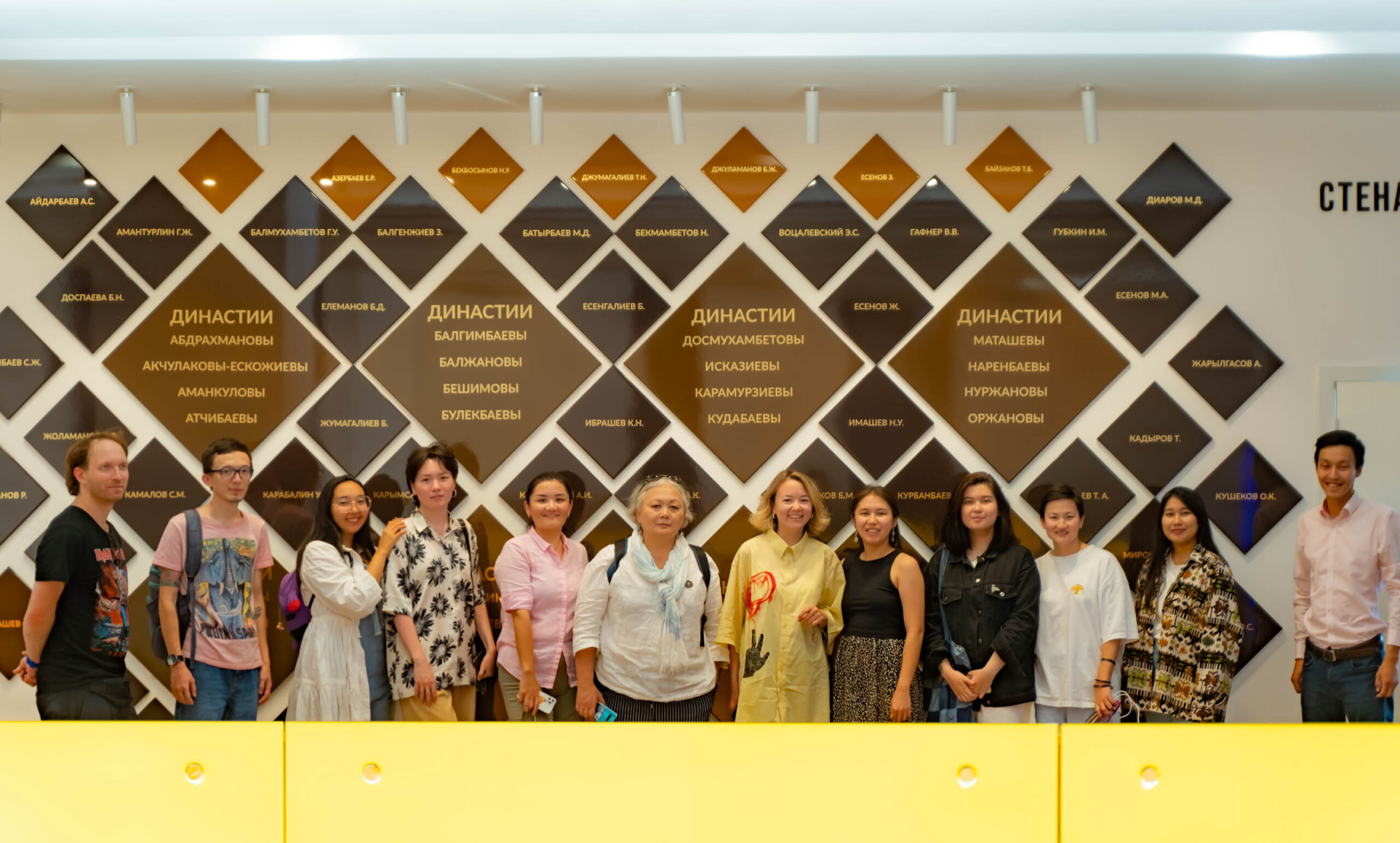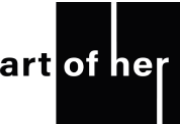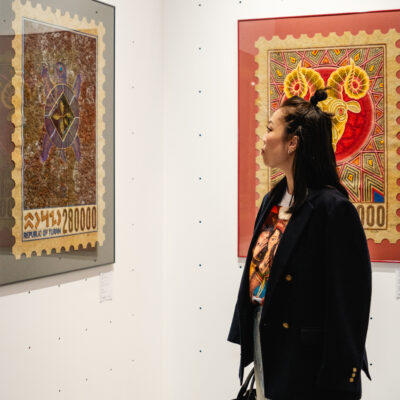The YEMAA Center for Contemporary Culture in Atyrau holds one of the few residences for young artists in Kazakhstan. The residence is not the usual format for our cultural landscape. It unites people from different cultural fields in one place in order to exchange experiences, training, mentoring, mentoring, and most importantly, to contribute to the development of both residents themselves and culture as a whole.
The residence of the YEMAA Center for Contemporary Culture is a kind of blend of an intellectual component and strictly artistic. In order to better understand how the residence works from the inside, we talked with curator Adiya Ramazanova about what difficulties and surprises there are, whether there is a place for spontaneity and in general about art and culture.
Adiya, let's start from the beginning, tell us how you came to the project?
I learned about the project from Kulshat Medeuova (L.N. Gumilyov Eurasian National University; Department of Philosophy, Professor; Doctor of Philosophy) that some interesting event among artists is planned in Atyrau in the summer, and they need someone who could work on the topic of cultural memory, since the project meant an educational program on frontier research. I thought it was a tempting offer, it was possible to travel to another city during the vacation, to continue the research, in general, I immediately agreed. After a while, we called Assel (ed. Asel Akhmetzhanova, curator in Contemporary art, co-founder of the Yemaa Center for Contemporary Culture), and that's where it all started! When Asel shared her vision of the project, what was planned, what is expected, I will be honest, I was taken aback, because the bar was set high, that is, the requirements from the curator, and from all the other participants, were high. But still, the desire to go out into the field, to try something new outside of teaching took over, and that's how I ended up in Atyrau in this project.
Was it difficult for you to decide to act in this unusual role for yourself? Have you been deciding for a long time?
I will not say that it was difficult, before arriving in Atyrau and the beginning of the work of the art residence itself, the organizers and I had been in touch since May. Asel advised, guided, together we worked out the educational part of the program, worked on the concept, shared ideas, which helped to integrate into the workflow almost immediately. But still, this is my first experience of art curating, and a subtle fear is in me to this day. Every day here I discover something new in communicating with people of art, sometimes I feel that I lack practice in the field of contemporary art, it's a completely different sphere with its own rules and values. But I am, so to speak, in the subject, for example, now reading the book by Hans Ulrich Obrist “A Brief History of Curatorship”.
Great. And tell me, having worked for almost 2 weeks in the residence, what is the difference between your world of the academy, where, if I imagine correctly, the work is quite heavily regulated by the state educational policy and, so to speak, a living pulsating "field"? It seems to me that in the "field" one can directly practice theory and be, so to speak, on the crest of modern problems of culture and philosophy? And also, probably, everything changes all the time, right?
A little bit wrong, look, today many state and national universities are becoming more autonomous and have the opportunity to regulate educational programs based on market conditions and research trends in science. In other words, at the university we can move away from stupidity and offer our own programs. However, in order to introduce a subject into the educational program, testing, program development, definition of skills, learning outcomes, discussion, etc. are needed, which takes from one year to several years. And during this time, some research approaches or cultural phenomena may change. But despite this, in recent years we have been organizing visiting lectures with students, inviting practitioners to their classes. All this is not without bureaucratic processes, of course. This is a big breakthrough, because when I was a student we studied theory and history more, and now we are more focused on the methods and texts of contemporaries. That is, today the trend is that the academic world is becoming more and more open and entering the field, while the field is adopting the experience of the academic world in the form of short-term programs. In this sense, I would like to note the advantageous, so to speak, and advanced multidisciplinary approach of the YEMAA Center for Contemporary Art.

It's good to know that. And what place does modern art occupy in cultural studies and philosophy today? Have you crossed paths with him in the framework of any professional research?
We used to think that art as a whole is for the ages, and perceive it as some kind of revelation for the chosen ones. But the world is changing rapidly and our perception of art is changing. So it was during the Renaissance, when art went beyond the temples and went into society, and then there were many opponents who believed that it was not art. And now there are many critics of contemporary art who believe that it does not carry any historical burden. However, contemporary art conveys the mood of society very well, intertwining with everyday practices, through performances and art projects enters into discussion here and now. So, within the framework of fundamental projects implemented since 2011 at the Department of Philosophy of ENU under the leadership of Medeuova Kulshat, we consider contemporary art as part of social and cultural memory. The research results are introduced into the educational process in the form of subjects “Commemorative studies in the modern culture of Kazakhstan”, “Anthropology of morality”, “Space in the cultural landscape of Kazakhstan”, etc.
Returning to the residence, tell me, what was the funniest episode?
I think the first two weeks are the most memorable, although everything is mixed up and somehow intertwined. When we discuss something with residents, we sometimes start to get confused about who, what, where it was. Sometimes it's funny. But from the first days it became clear that it was necessary to keep a record. Residents quickly got their bearings, so in addition to photographing and sketching their associative ideas, they adopted the skill of keeping records. All the interesting things are ahead, because residents are starting to implement their ideas.
And the most nervous?
A slightly tense moment for us was probably the fact that we were being filmed. We are still used to filtering our videos and photos. Now I even understand what the working side is.
What turned out to be the most difficult for you? And on the contrary, the simplest?
It was quite easy for me to draw up a residency program and conceptualize it, because I have experience in organizing summer schools and international conferences. But there were some difficulties. For example, the selection of participants. Mentors, lecturers and organizers and I conducted a qualifying round together, conducted interviews with applicants, the task was to select only 5 residents out of 54 applicants. Since the residence comes with an educational program, the conditions for submitting documents provided for writing an essay and a motivation letter, and for my part I paid more attention to the correspondence of the essay to the topic of the residence, and in the motivation letter I paid attention to the applicants' desire to acquire new skills. The second difficult point was not to overload the residents with theory and texts, this is still not a university, but to hear them and send them on request.
And how many hours a day do you work? How does a typical day at the residence work? Does your teaching experience help you in the residence?
Of course, my pedagogical experience helps me to look at situations from the outside, to anticipate some moments, to direct the flow in one direction or another in time, to understand temperaments and characters. As for a typical day, the first two weeks were very busy with lectures and workshops, excursions to Atyrau and museums of the city, expeditions to the Mangystau region and Saraishyk. Lecture days started at 9 am with a lunch break and lasted until 7 pm. After dinner, we arranged peripatetic walks, so to speak, we worked out the theoretical part on the field. We went on city tours at 7 a.m. while the temperature was still at 25-28 degrees, and at 11 o'clock we were already returning to workshops. In addition, there are homework assignments in the residents' program. For example, reading books on lectures by Kulshat Medeuova, composing anime by Saule Dyusenbina, collage of sound with an image by Diaz Adil. I must say, I, like residents, sometimes did not have time not only to put the received information and impressions of everything that was happening in my head, but even to scroll through some materials or photos taken during the day, this, you know, is everyone's favorite activity now. In general, I hope that the program helped to reveal the topic of the residence, and its richness pushed residents to implement their final works. 3-4 weeks of residents are devoted to the implementation of their creative ideas.


Tell me about the concept. "Frontier" — that's when I heard this word, "Wildwildwest" immediately rang in my head, cowboys, Indians, you know, that's all. To tell the truth, I thought that just as there were no white spots left on the world map, so there were no frontiers left on it, but you really revived this concept.
By the way, about "Wild wild west" it's still an actual thing. For example, in the public consciousness, it is considered that Westerners are audacious, Southerners are “driven”, northerners are harsh, etc. But due to globalization and digitalization, of course, all boundaries are blurred, and it seems like there are no divisions anymore, and it is not necessary to focus on some of their own features. As for the concept of the frontier, it is not just and not necessarily a border between worlds, we use this concept in the residence, denoting a space of mutual enrichment, a meeting place of different cultures. For example, in the westernmost region, in Atyrau, we can clearly observe the traces and influence of different frontiers – from Sufism to the processes of colonization and decolonization. That is, the concept does not mean some kind of conflict and collision, but means environmental friendliness and the flow of one into another. After following all these historical traces – the European and Asian sides of Zhaiyk, Zhilgorodok, Isatai and Makhambet Square and Novaya Square — we returned to our origins, residents began to study myths and legends on Serikball Kondybai. That is, they began to delve into studying themselves not in the way historically accepted, but in their own way.
In general, yes, the concept of the frontier was originally introduced by Frederick Turner and was associated with colonial processes and the recognition of the "other", the definition of "one's own". In general, I repeat – at present, the frontier is not considered as a conflict zone, but rather, on the contrary, as a space for communication, interaction. The frontier focus today shows what role borders play in the construction of the modern social world. Social and humanitarian studies trace the versatility of the concept of frontier - cultural frontier, colonial frontier, museum frontier, frontier city, etc. First of all, it is a zone of contacts of different cultures, different economic, social systems or peripheries.
Within the framework of the residence, the emphasis was placed on the cultural border of one region – the cultural frontier of the city of Atyrau. The historical and modern background of the city distinguish Atyrau from other cities and make it a significant place and field for research on the concept of the "frontier".
The conversation was conducted by Asel Mukasheva, columnist, consultant of the residence.
The project was created by the YEMAA Center for Contemporary Culture in partnership with the Eurasia Foundation of Central Asia, Chevron, Aspar Kashagan and Infinity plaza eco-park.






Republican contest of drawings and photographs "Green Vector"
Announcement: opening of the exhibition "Family as art" and the traditional meeting of Onermen Kezdesy